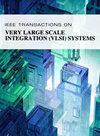实现高效再训练:跨层优化的大规模近似神经网络框架
IF 2.8
2区 工程技术
Q2 COMPUTER SCIENCE, HARDWARE & ARCHITECTURE
IEEE Transactions on Very Large Scale Integration (VLSI) Systems
Pub Date : 2024-04-17
DOI:10.1109/TVLSI.2024.3386900
引用次数: 0
摘要
利用近似神经网络(ApproxNN)中的近似乘法器可以有效减少硬件面积和功耗,使其适用于边缘应用。然而,逐层误差的传播限制了近似乘法器在大规模近似神经网络和复杂任务中的应用。目前,考虑近似乘法误差的再训练技术通常用于弥补精度损失。然而,由于近似乘法器引入误差的不规则性,现有的通用加速硬件(如 GPU)难以有效地模拟其功能并加速重训练,从而导致近似网络应用中巨大的重训练开销。在本文中,我们提出了一种 ApproxNN 框架,它能以规则和可控的位置引入误差,从而实现大规模 ApproxNN 的高效再训练。为了验证所提出的 ApproxNN 框架的有效性,我们还提出了与该框架相匹配的近似乘法器设计。实验结果表明,所提出的ApproxNN框架能够实现高达46美元/倍的重训练速度,与精确乘法器相比,所提出的近似乘法器将面积/功耗延迟积(PDP)降低了31%/63%。与浮点神经网络(NN)模型相比,在ImageNet数据集上应用ResNet50时,只需进行15次重新训练,准确率就只下降了1.13%,超过了其他最先进的设计。本文章由计算机程序翻译,如有差异,请以英文原文为准。
Toward Efficient Retraining: A Large-Scale Approximate Neural Network Framework With Cross-Layer Optimization
Leveraging approximate multipliers in approximate neural networks (ApproxNNs) can effectively reduce hardware area and power consumption, making them suitable for edge-side applications. However, the propagation of layer-by-layer errors limits the application of approximate multipliers to large-scale ApproxNNs and complex tasks. Currently, retraining techniques that consider approximate multiplication errors are commonly used to compensate for the accuracy loss. However, due to the irregularity of the errors introduced by approximate multiplier, it is difficult for the existing generic acceleration hardware (e.g., GPU) to efficiently simulate its function and accelerate retraining, which thereby leads to a huge retraining overhead in ApproxNNs’ application. In this article, we propose an ApproxNN framework that introduces errors with regular and controlled positions for high-efficiency retraining of large-scale ApproxNNs. An approximate multiplier design that matches this framework is also presented to verify the effectiveness of the proposed ApproxNN framework. Experiment results demonstrate that the proposed ApproxNN framework is able to achieve up to
$46\times $
speedup in retraining, and the proposed approximate multiplier reduces area/power-delay product (PDP) by 31%/63% compared to the exact multiplier. Compared with the floating-point neural network (NN) model, an accuracy decrease of only 1.13% is achieved when applied to ResNet50 on ImageNet dataset with only 15-epochs retraining, which surpasses other state-of-the-art designs.
求助全文
通过发布文献求助,成功后即可免费获取论文全文。
去求助
来源期刊
CiteScore
6.40
自引率
7.10%
发文量
187
审稿时长
3.6 months
期刊介绍:
The IEEE Transactions on VLSI Systems is published as a monthly journal under the co-sponsorship of the IEEE Circuits and Systems Society, the IEEE Computer Society, and the IEEE Solid-State Circuits Society.
Design and realization of microelectronic systems using VLSI/ULSI technologies require close collaboration among scientists and engineers in the fields of systems architecture, logic and circuit design, chips and wafer fabrication, packaging, testing and systems applications. Generation of specifications, design and verification must be performed at all abstraction levels, including the system, register-transfer, logic, circuit, transistor and process levels.
To address this critical area through a common forum, the IEEE Transactions on VLSI Systems have been founded. The editorial board, consisting of international experts, invites original papers which emphasize and merit the novel systems integration aspects of microelectronic systems including interactions among systems design and partitioning, logic and memory design, digital and analog circuit design, layout synthesis, CAD tools, chips and wafer fabrication, testing and packaging, and systems level qualification. Thus, the coverage of these Transactions will focus on VLSI/ULSI microelectronic systems integration.

 求助内容:
求助内容: 应助结果提醒方式:
应助结果提醒方式:


